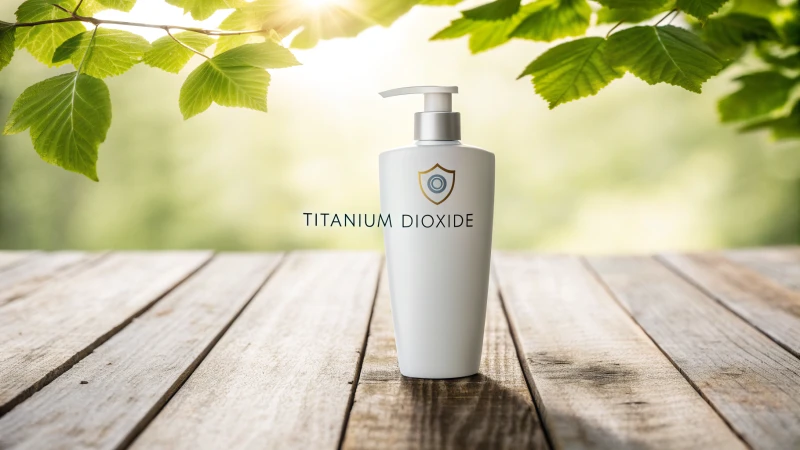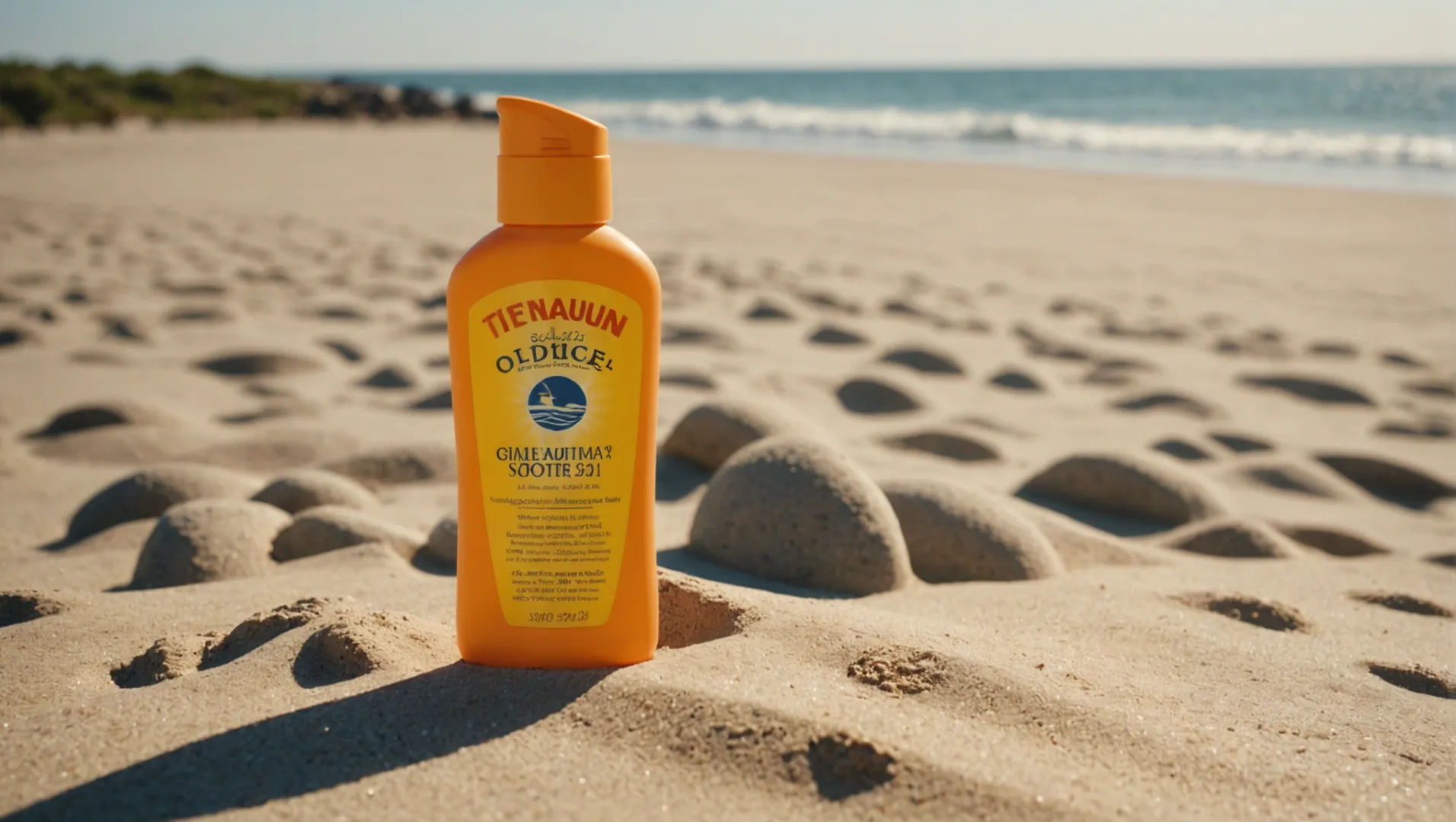
Curious about why titanium dioxide is often found in your sunscreen? You’re not alone!
Titanium dioxide is used in sunscreen because it effectively protects skin by reflecting and scattering harmful UV rays. It acts as a physical barrier, offering broad-spectrum protection against UVA and UVB rays, making it a preferred choice for sensitive skin.
While titanium dioxide provides excellent sun protection, understanding its role can help you make informed choices about your skincare products. Read on to explore its benefits, safety concerns, and how it compares to other ingredients like zinc oxide.
[claim claim=”Titanium dioxide provides immediate sun protection.” istrue=”true” explanation=”Titanium dioxide reflects UV rays instantly upon application, unlike chemical sunscreens.”]
What Are the Benefits of Titanium Dioxide in Sunscreen?
Curious about the benefits of titanium dioxide in sunscreen? You’re not alone!
Titanium dioxide offers effective UV protection by reflecting and scattering rays, ideal for sensitive skin.
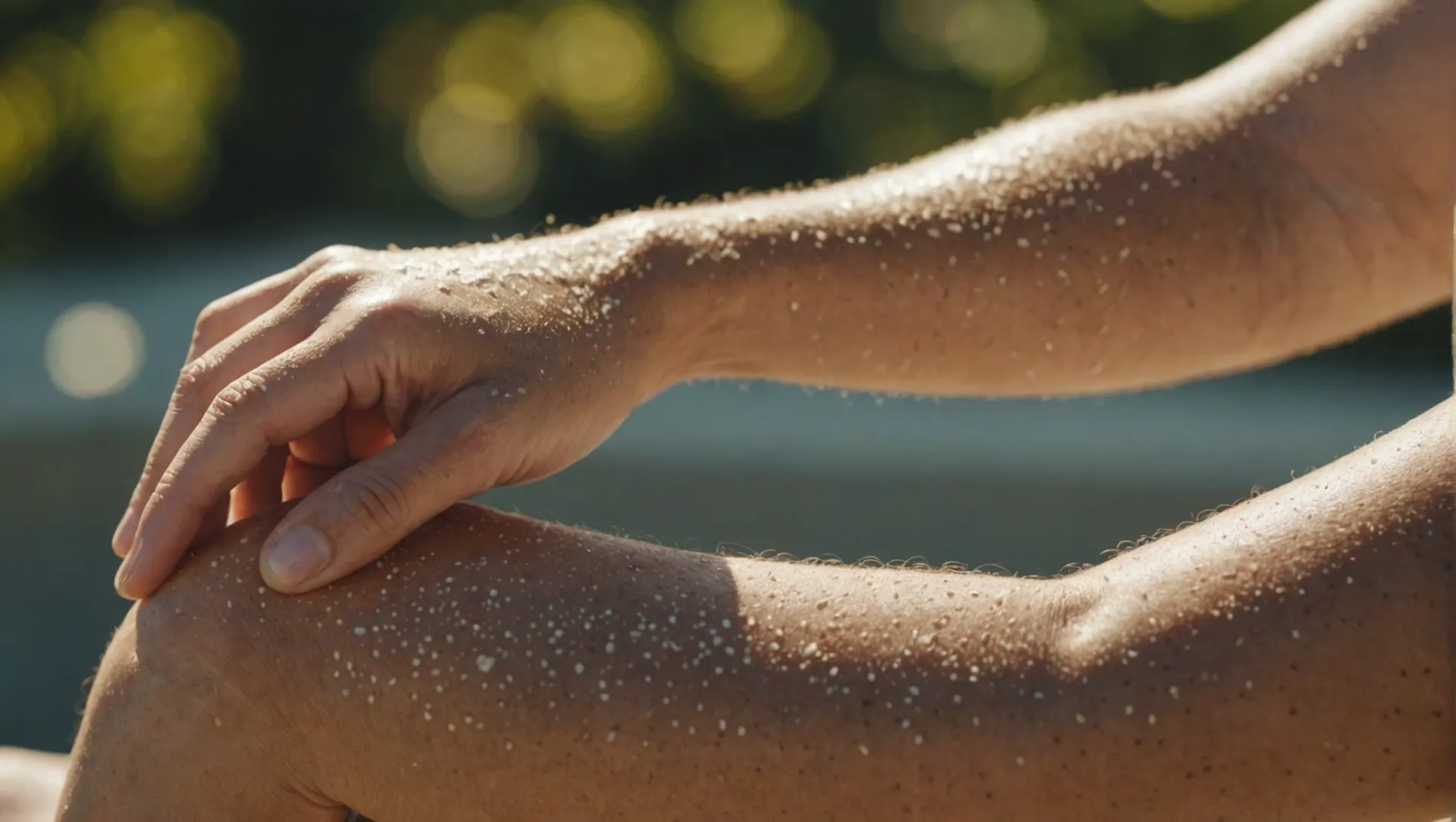
Reflects and Scatters Harmful UV Rays
One of the primary benefits of titanium dioxide in sunscreen is its ability to reflect and scatter UV rays. This makes it a physical sunscreen1 ingredient that creates a protective layer on the skin’s surface. Unlike chemical sunscreens that absorb UV radiation, titanium dioxide acts as a mirror, bouncing harmful rays away.
This mechanism is particularly effective in providing broad-spectrum protection against both UVA and UVB rays, which can cause skin cancer and premature aging.
Gentle on Sensitive Skin
Titanium dioxide is hypoallergenic and non-comedogenic, meaning it doesn’t irritate or clog pores. This makes it an excellent choice for individuals with sensitive or acne-prone skin. Moreover, its inert nature means it doesn’t interact with the skin’s natural oils or cause adverse reactions.
Many dermatologists recommend sunscreens containing titanium dioxide for children and those with sensitive skin due to its mild formulation.
Immediate Sun Protection
Unlike chemical sunscreens that require application 20 minutes before sun exposure, titanium dioxide offers immediate protection. This convenience makes it ideal for those on-the-go or who might forget to apply sunscreen ahead of time.
Stability in Sunlight
Another advantage is its stability when exposed to sunlight. Titanium dioxide maintains its effectiveness without breaking down under UV radiation, providing reliable protection throughout the day. This stability enhances its longevity on the skin, reducing the need for frequent reapplication compared to some chemical filters.
Comparison with Other Ingredients
While titanium dioxide is beneficial, it’s essential to understand how it compares to other physical blockers2, like zinc oxide. Both ingredients are mineral-based and provide broad-spectrum protection, but zinc oxide is known for offering slightly better UVA coverage.
| Feature | Titanium Dioxide | Zinc Oxide |
|---|---|---|
| UV Protection | UVA & UVB | UVA & UVB |
| Skin Type Suitability | Sensitive Skin | All Skin Types |
| Immediate Protection | Yes | Yes |
| Stability in Sunlight | High | High |
Understanding these nuances helps in choosing the right sunscreen that meets individual needs and preferences.
[claim claim=”Titanium dioxide provides immediate sun protection.” istrue=”true” explanation=”Titanium dioxide acts as a physical blocker, offering instant UV protection.”]
[claim claim=”Titanium dioxide is less stable in sunlight than chemical filters.” istrue=”false” explanation=”Titanium dioxide is stable under UV exposure, unlike some chemical filters.”]
How Does Titanium Dioxide Compare to Zinc Oxide?
Curious about the differences between titanium dioxide and zinc oxide in sunscreens? Let’s break it down!
Titanium dioxide and zinc oxide are both physical sunscreen ingredients, offering broad-spectrum UV protection. While titanium dioxide is effective against UVB rays, zinc oxide covers a wider range of UVA rays. Both are non-comedogenic and safe for sensitive skin, making them ideal for everyday use.
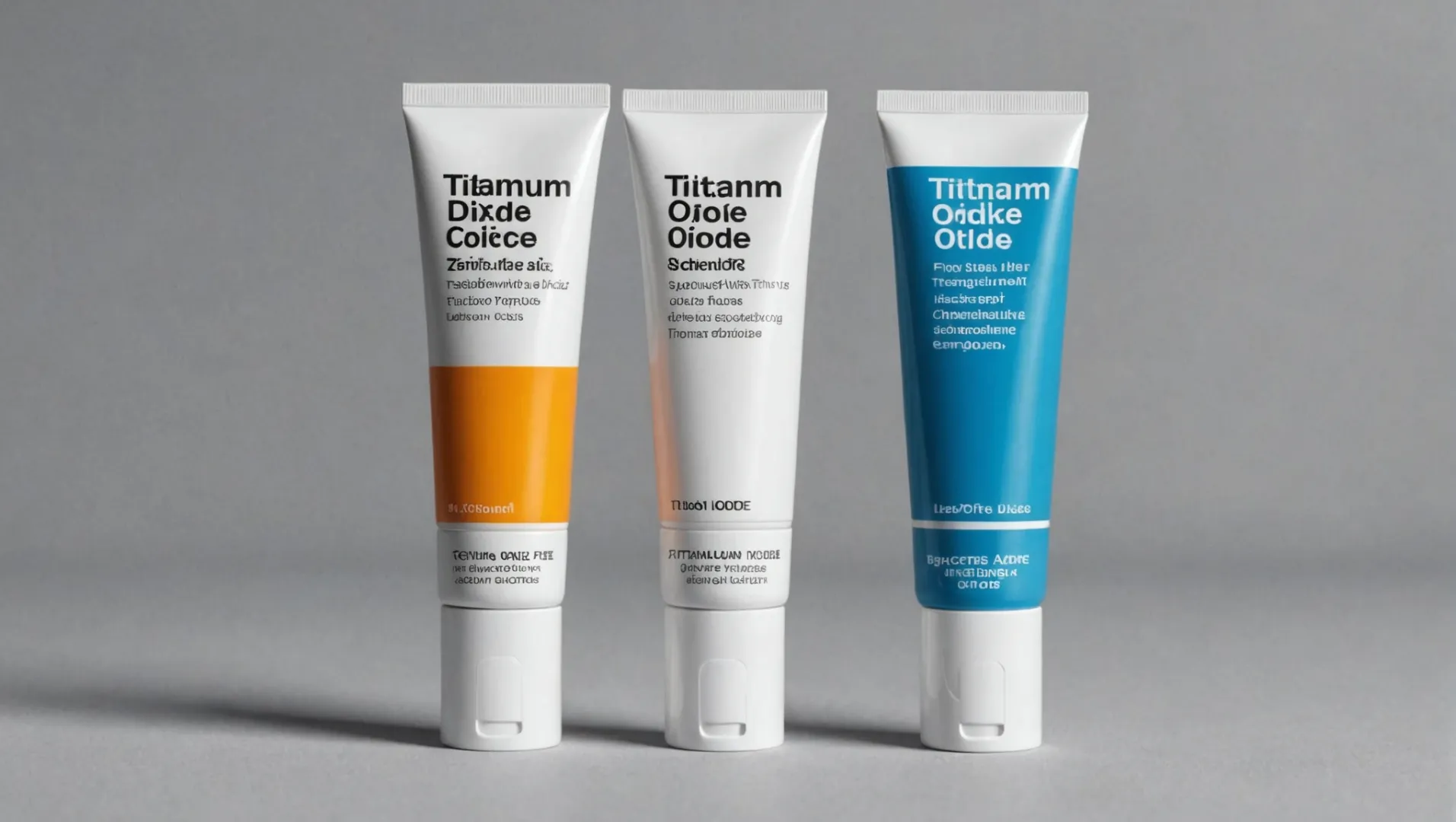
Physical Sunscreens: An Overview
Physical sunscreens, also known as mineral sunscreens, use ingredients like titanium dioxide and zinc oxide to create a protective layer on the skin’s surface. This layer reflects and scatters ultraviolet (UV) rays, preventing them from penetrating the skin. Unlike chemical sunscreens that absorb UV radiation, these physical blockers provide immediate protection after application.
Comparing Titanium Dioxide and Zinc Oxide
Both titanium dioxide and zinc oxide are FDA-approved for sunscreen use. However, their effectiveness varies slightly:
- Titanium Dioxide: Known for its ability to effectively block UVB and short UVA rays, titanium dioxide is often used in combination with other ingredients to enhance UVA protection.
- Zinc Oxide: Offers a broader spectrum of protection compared to titanium dioxide, particularly against longer UVA rays. This makes zinc oxide a popular choice3 for broad-spectrum sunscreens.
| Property | Titanium Dioxide | Zinc Oxide |
|---|---|---|
| UV Protection | UVB, Short UVA | Broad-spectrum, UVA & UVB |
| Texture | Lighter | Thicker |
| Skin Sensitivity | Suitable for sensitive skin | Suitable for sensitive skin |
| Comedogenicity | Non-comedogenic | Non-comedogenic |
Which is Better for Your Skin?
Deciding between titanium dioxide and zinc oxide depends on your personal needs:
- Sensitive Skin: Both ingredients are gentle, but zinc oxide’s broader spectrum may be more beneficial for those with heightened sensitivity to UVA rays.
- Cosmetic Preferences: Titanium dioxide tends to be lighter and less likely to leave a white cast, making it preferable for daily wear under makeup.
- Specific Concerns: For comprehensive UV protection4, consider sunscreens that combine both ingredients to maximize efficacy.
Making an Informed Choice
When selecting a sunscreen, consider your skin type, daily exposure levels, and any specific dermatological recommendations. Consulting with a dermatologist can provide personalized advice on whether titanium dioxide or zinc oxide—or a combination of both—is best suited to your needs.
Final Thoughts
Both titanium dioxide and zinc oxide are excellent choices for protecting your skin from harmful UV radiation. Their ability to provide immediate protection without irritating sensitive skin types makes them valuable additions to any skincare regimen. To explore more about how these ingredients can benefit you, delve into reliable resources5 and expert advice.
In conclusion, choosing the right sunscreen involves understanding how these key ingredients function and what they offer to your unique skin concerns.
[claim claim=”Titanium dioxide is more effective against UVA rays than zinc oxide.” istrue=”false” explanation=”Zinc oxide offers broader UVA protection compared to titanium dioxide.”]
[claim claim=”Zinc oxide sunscreens are suitable for sensitive skin types.” istrue=”true” explanation=”Zinc oxide is gentle and non-comedogenic, ideal for sensitive skin.”]
Are There Any Safety Concerns with Titanium Dioxide?
Wondering if titanium dioxide in your sunscreen poses any safety risks? Let’s explore this concern.
Titanium dioxide is generally safe for topical use in sunscreens, though inhalation of its nanoparticles may pose risks. Regulatory bodies approve its use, emphasizing safe application.
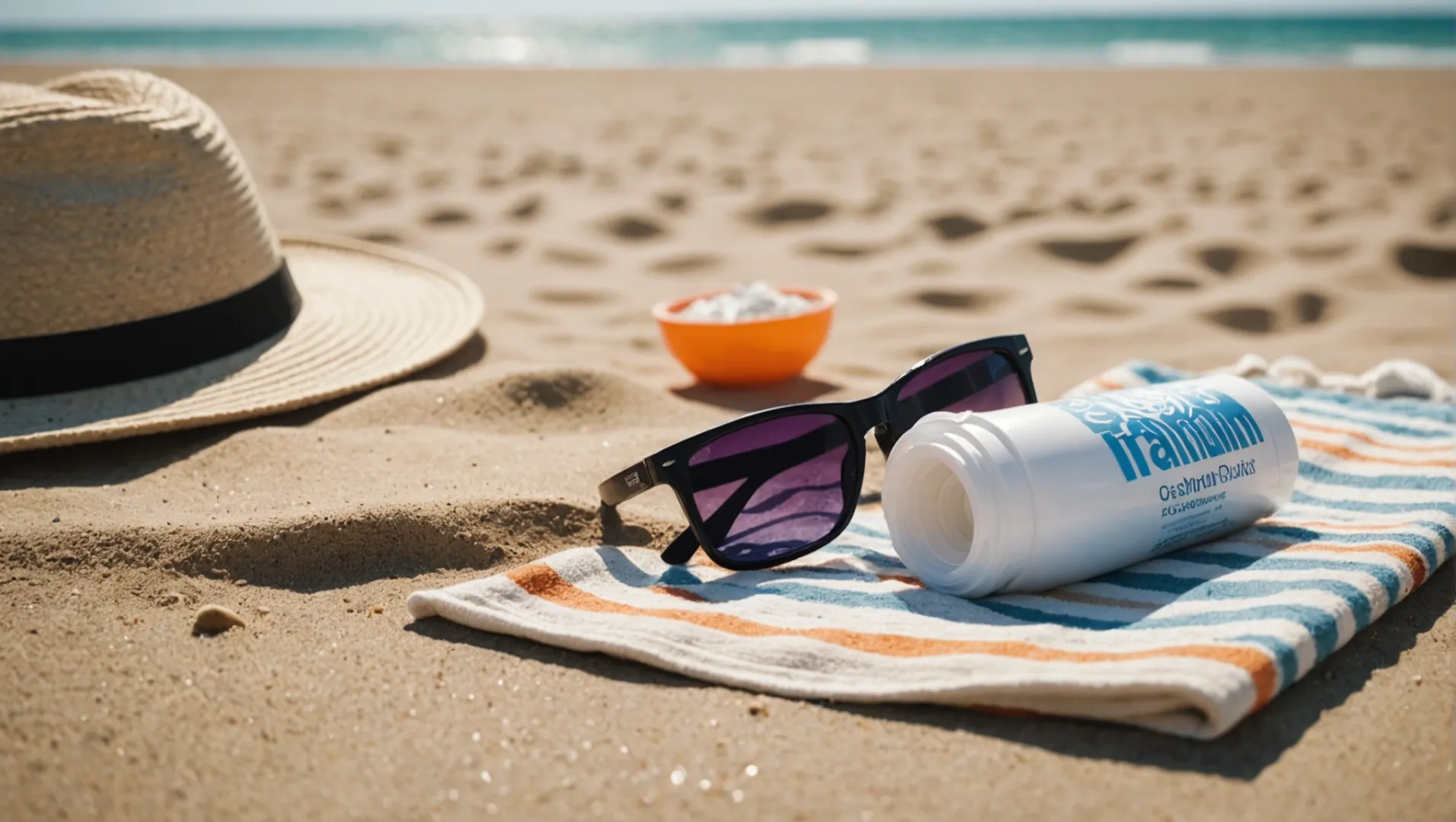
Understanding Titanium Dioxide’s Role
Titanium dioxide is a naturally occurring mineral widely used in sunscreens for its ability to reflect and scatter UV rays. As a physical blocker, it sits on the skin’s surface, providing a protective barrier against both UVA and UVB radiation.
Potential Safety Concerns
The primary safety concern with titanium dioxide arises from its nanoparticle form, particularly when inhaled. In 2006, the International Agency for Research on Cancer6 classified titanium dioxide as "possibly carcinogenic to humans" based on animal studies involving high-dose inhalation. This classification does not apply to topical use in cosmetics.
Table: Titanium Dioxide Safety Classification
| Classification | Agency | Concern Level |
|---|---|---|
| Group 2B | IARC | Possibly Carcinogenic |
Regulatory Standpoint
Despite these concerns, regulatory bodies such as the U.S. FDA7 and the European Commission continue to approve titanium dioxide for use in sunscreens. They emphasize its safety when used as intended, highlighting its non-systemic absorption when applied to the skin.
Choosing Safer Options
For those worried about potential risks, opting for sunscreens without nanoparticles might offer peace of mind. Alternatively, choosing formulations with zinc oxide can provide similar protection without the inhalation concerns associated with titanium dioxide.
Considerations for Safe Sunscreen Use:
- Choose cream or lotion-based products over sprays to minimize inhalation risk.
- Look for labels indicating non-nano particles.
- Consult a dermatologist to select products best suited to your skin type and concerns.
In conclusion, while there are some safety considerations regarding titanium dioxide in nanoparticle form, its use in traditional sunscreen formulations remains supported by scientific research and regulatory approvals. Consumers are encouraged to stay informed and choose products that align with their personal health preferences and needs.
[claim claim=”Titanium dioxide is unsafe for topical use.” istrue=”false” explanation=”Regulatory bodies approve it for topical use, emphasizing safety.”]
[claim claim=”Inhaling titanium dioxide nanoparticles poses health risks.” istrue=”true” explanation=”IARC classifies inhalation as possibly carcinogenic based on studies.”]
How to Choose the Right Sunscreen with Titanium Dioxide?
Selecting the perfect sunscreen with titanium dioxide can be tricky. Here’s what to consider!
To choose the right sunscreen with titanium dioxide, check for non-nano formulations, broad-spectrum protection, and SPF ratings of at least 30. Ensure it suits your skin type and offers additional benefits like moisturizing or water resistance.
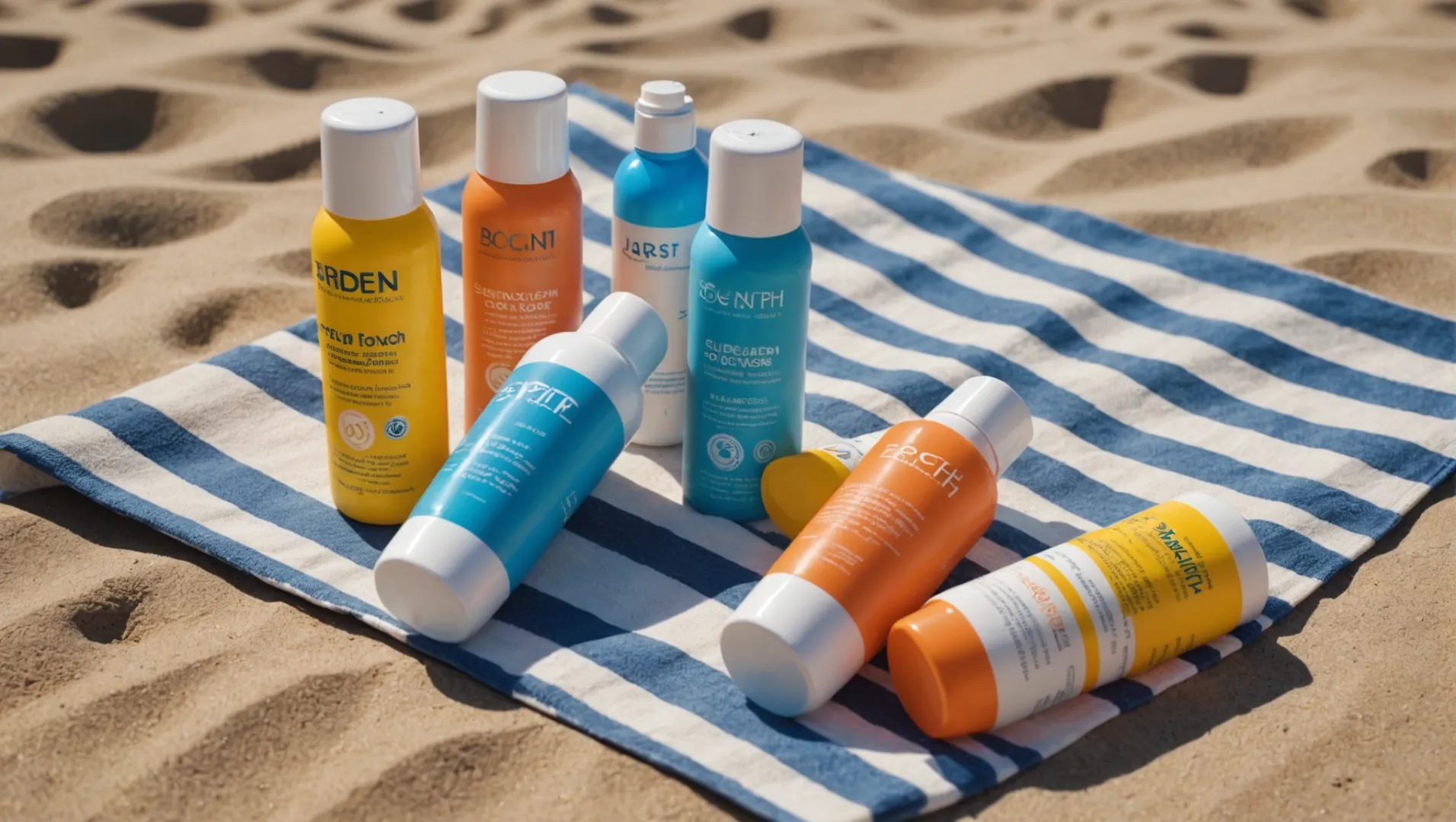
Understanding Titanium Dioxide Formulations
When selecting a sunscreen, it’s essential to know whether the titanium dioxide is in a nano or non-nano form. Non-nano formulations are generally recommended if you’re concerned about potential risks associated with nanoparticles. These particles are larger and less likely to penetrate the skin, reducing the risk of systemic exposure.
Tip: Look for labels that specify "non-nano" to ensure you’re making a safer choice.
Broad-Spectrum Protection
One of the key advantages of titanium dioxide is its ability to provide broad-spectrum protection against both UVA and UVB rays. When choosing a sunscreen, ensure it clearly states "broad-spectrum" on the packaging. This guarantees comprehensive coverage against sun damage, reducing the risk of skin cancer and premature aging.
Suitable for Sensitive Skin
Titanium dioxide is often praised for its gentle nature, making it ideal for sensitive skin. However, it’s important to test any new product on a small patch of skin before full application. Consider formulations that include soothing agents like aloe vera or chamomile extract to minimize irritation.
Checking the SPF Rating
The SPF (Sun Protection Factor) rating indicates how well the sunscreen can protect you from UVB rays. Experts recommend choosing a sunscreen with an SPF of at least 30 for adequate protection. For extended outdoor activities, consider higher SPFs for longer-lasting protection.
| Feature | Recommendation |
|---|---|
| SPF | At least 30 |
| Formulation | Non-nano, if possible |
| Broad-spectrum | Yes |
| Suitable for | Sensitive skin |
Additional Benefits
Some sunscreens offer more than just UV protection. For instance, if you have dry skin, opt for a sunscreen that also contains moisturizing ingredients like hyaluronic acid or glycerin. If you’ll be swimming or sweating, look for water-resistant options that maintain effectiveness despite moisture exposure.
By considering these factors, you can make an informed decision about which sunscreen with titanium dioxide8 best fits your needs and lifestyle.
[claim claim=”Non-nano titanium dioxide is safer than nano.” istrue=”true” explanation=”Non-nano particles are larger, reducing skin penetration risk.”]
[claim claim=”SPF 15 is adequate for daily use sunscreen.” istrue=”false” explanation=”Experts recommend SPF 30 for adequate UV protection.”]
Conclusion
In conclusion, choosing the right sunscreen involves understanding how these key ingredients function and what they offer to your unique skin concerns.
-
Learn about how physical sunscreens protect your skin effectively.: Physical (mineral) sunscreens sit on the surface of your skin and act as a shield, while chemical sunscreens sink into your skin and act more like a sponge. ↩
-
Discover how these two popular sunscreen ingredients compare.: Titanium dioxide is less effective than Zinc Oxide at blocking UV-A rays. Therefore, only Zinc Oxide offers truly broad-spectrum sun protection. ↩
-
Explore why zinc oxide is favored for its wide UVA/UVB coverage.: The benefits of zinc oxide sunscreen include being an excellent anti-inflammatory, so those with sensitive skin and more serious skin conditions such as eczema … ↩
-
Learn about the mechanisms of these mineral sunscreens.: Zinc oxide and titanium dioxide are two naturally occurring minerals that sit on top of your skin to create a barrier and reflect the sun’s powerful UVA and … ↩
-
Discover expert advice on choosing effective sunscreens.: SPF: All the experts we interviewed suggest SPF 30 or above for the most protection under the harsh rays. “It’s always important to look for a … ↩
-
Check how titanium dioxide is classified by the IARC for cancer risk.: In February 2006, the International Agency for. Research on Cancer (IARC), an arm of the World Health. Organization, changed the classification of TiO2 to. ↩
-
Discover the FDA’s position on using titanium dioxide in sunscreens.: However, the proposed order proposes GRASE status for sunscreens containing zinc oxide and titanium dioxide; not GRASE status for sunscreens … ↩
-
Explore top non-nano sunscreens for safer, effective UV protection.: The most clean non-nano sunscreens I have found are babo botanicals and Mad Hippie, both are in the US. Babo’s sunscreen leaves a slight white … ↩




